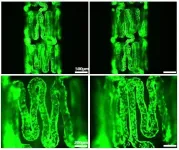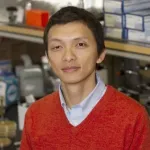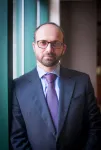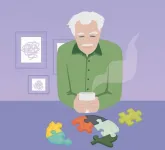UC San Diego scientists develop the first CRISPR/Cas9-based gene drive in plants
New technology designed to breed more robust crops to improve agricultural yield and resist the effects of climate change
2021-06-25
(Press-News.org) With a goal of breeding resilient crops that are better able to withstand drought and disease, University of California San Diego scientists have developed the first CRISPR-Cas9-based gene drive in plants.
While gene drive technology has been developed in insects to help stop the spread of vector-borne diseases such as malaria, researchers in Professor Yunde Zhao's lab, along with colleagues at the Salk Institute for Biological Studies, demonstrated the successful design of a CRISPR-Cas9-based gene drive that cuts and copies genetic elements in Arabidopsis plants.
Breaking from the traditional inheritance rules that dictate that offspring acquire genetic materials equally from each parent (Mendelian genetics), the new research uses CRISPR-Cas9 editing to transmit specific, targeted traits from a single parent in subsequent generations. Such genetic engineering could be used in agriculture to help plants defend against diseases to grow more productive crops. The technology also could help fortify plants against the impacts of climate change such as increased drought conditions in a warming world.
The research, led by postdoctoral scholar Tao Zhang and graduate student Michael Mudgett in Zhao's lab, is published in the journal Nature Communications.
"This work defies the genetic constraints of sexual reproduction that an offspring inherits 50% of their genetic materials from each parent," said Zhao, a member of the Division of Biological Sciences' Section of Cell and Developmental Biology. "This work enables inheritance of both copies of the desired genes from only a single parent. The findings can greatly reduce the generations needed for plant breeding."
The study is the latest development by researchers in the Tata Institute for Genetics and Society (TIGS) at UC San Diego, which was built upon the foundation of a new technology called "active genetics" with potential to influence population inheritance in a variety of applications.
Developing superior crops through traditional genetic inheritance can be expensive and time consuming as genes are passed through multiple generations. Using the new active genetics technology based on CRISPR-Cas9, such genetic bias can be achieved much more quickly, the researchers say.
"I am delighted that this gene drive success, now achieved by scientists affiliated with TIGS in plants, extends the generality of this work previously demonstrated at UC San Diego, to be applicable in insects and mammals," said TIGS Global Director Suresh Subramani. "This advance will revolutionize plant and crop breeding and help address the global food security problem."
INFORMATION:
Coauthors of the paper include: Tao Zhang, Michael Mudgett, Ratnala Rambabu, Bradley Abramson, Xinhua Dai, Todd Michael and Yunde Zhao.
The research was funded by TIGS-UC San Diego and a training grant from the National Institutes of Health.
[Attachments] See images for this press release:
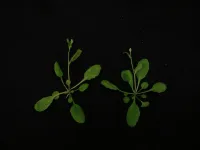
ELSE PRESS RELEASES FROM THIS DATE:
2021-06-25
Tsukuba, Japan - The COVID-19 pandemic has changed the way people eat, work, shop and go to school. Now, researchers from Japan have found surprising differences in the way people use healthcare services--including house calls from doctors.
In a study published this month in BMC Emergency Medicine, researchers from the University of Tsukuba have revealed that patterns in illness type and severity did change during the pandemic--with unexpected trends that may tell us about how people use health care services when personal contact carries inherent risk.
In Tokyo, private after-hours house call services (AHHC) provide in-home medical service outside of regular ...
2021-06-25
Quantum dots (QDs) are semiconductor particles only a few nanometers across that, thanks to their small size, exhibit peculiar optical and electronic properties due to quantum mechanics. With existing and foreseen applications in screens, lighting, lasers, and energy harvesting, research in quantum dots has been steadily progressing. In particular, colloidal QDs (CQDs) have been in the nanotechnology spotlight for over a decade.
CQDs are semiconductor nanocrystals that can be produced easily from solution-based processes, which make them suitable for mass production. However, for CQD-based devices to operate at their best, the quantum dots should be monodisperse--that is, ...
2021-06-25
The contemporary materials industry raises the problem of creating a microscopic theory that allows to describe the observed physicochemical properties of a wide class of substances which are in demand in modern industry, medicine, and agriculture. A general and consistent theory will help to obtain reliable information from experimental data on the structure of matter, existing interactions and dynamic processes occurring in it, which can help in the synthesis and quality control of prospective materials.
The study of the molecular structure of a substance and its intermolecular interactions is one of the most important and interesting tasks facing modern science. Of particular ...
2021-06-25
Medical materials that can be inserted into the human body have been used for decades in the field of regenerative medicine - for example, stents that can help dilate clogged blood vessels and implants that can replace teeth or bones. The prolonged use of these materials can result in serious adverse effects and loss of various functions - for example, inflammatory responses, generation of fibrous tissues around the material, and generation of blood clots that block blood vessels.
Recently, a Korean research team has drawn attention for developing a technology to reduce ...
2021-06-25
Curtin University research has found tiny amounts of gold can be trapped inside pyrite, commonly known as 'fool's gold', which would make it much more valuable than its name suggests.
This study, published in the journal Geology in collaboration with the University of Western Australia and the China University of Geoscience, provides an in-depth analysis to better understand the mineralogical location of the trapped gold in pyrite, which may lead to more environmentally friendly gold extraction methods.
Lead researcher Dr Denis Fougerouse from Curtin's School of Earth and Planetary Sciences ...
2021-06-25
Effective diagnostics, therapies and treatments for diseases and infections could increasingly involve re-engineering the body's internal biomechanisms at their most basic chemical and molecular foundations.
Growing knowledge about the body's biological processes is increasing the possibilities for restoring human health, says Xiao Wang, an associate professor of biomedical engineering in Arizona State University's Ira A. Fulton Schools of Engineering. He and a team of researchers are exploring ways to trigger and control cell differentiation and transition to unlock properties that may change bioengineers' approach to diagnostics, ...
2021-06-25
PITTSBURGH, June 25, 2021 - It is widely assumed that Americans' sexual activity took a nosedive during the early chaotic months of the coronavirus pandemic. But a new study from the University of Pittsburgh School of Medicine challenges this popular narrative.
In a research letter published in the Journal of Internal Medicine, scientists from Pitt and UPMC found that some people were having more sex during the pandemic than ever before. That group? Older men with erectile dysfunction.
"People's sexual lives contribute to the psychosocial fabric of society," said senior author Benjamin Davies, M.D., director of the Urologic Oncology Program at ...
2021-06-25
Researchers at the National Institute of Standards and Technology (NIST) and Wavsens LLC have developed a method for using radio signals to create real-time images and videos of hidden and moving objects, which could help firefighters find escape routes or victims inside buildings filled with fire and smoke. The technique could also help track hypersonic objects such as missiles and space debris.
The new method, described in Nature Communications, could provide critical information to help reduce deaths and injuries. Locating and tracking first responders indoors is a prime goal for the public safety ...
2021-06-25
A new University of Liverpool study could help scientists mitigate the future spread of zoonotic and livestock diseases caused by existing viruses.
Researchers have used a form or artificial intelligence (AI) called machine-learning to predict more than 20,000 unknown associations between known viruses and susceptible mammalian species. The findings, which are published in Nature Communications, could be used to help target disease surveillance programmes.
Thousands of viruses are known to affect mammals, with recent estimates indicating that less than 1% of mammalian viral diversity has been discovered to date. ...
2021-06-25
Canadian researchers at The Ottawa Hospital, the University of Ottawa, the Bruyère Research Institute and ICES have built and validated an online calculator that empowers individuals 55 and over to better understand the health of their brain and how they can reduce their risk of being diagnosed with dementia in the next five years.
Their process was published today in the Journal of Epidemiology and Community Health, and the calculator is available at projectbiglife.ca.
Dementia is an umbrella term for loss of memory and other thinking abilities severe enough to interfere with daily life. Every year, 76,000 new cases of dementia are diagnosed ...
LAST 30 PRESS RELEASES:
[Press-News.org] UC San Diego scientists develop the first CRISPR/Cas9-based gene drive in plants
New technology designed to breed more robust crops to improve agricultural yield and resist the effects of climate change



